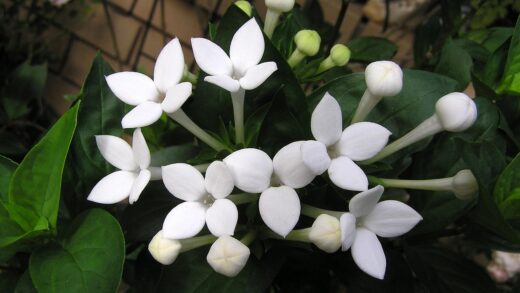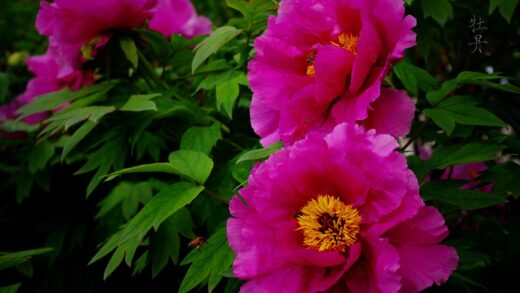Understanding the specific water requirements of alpine heath is fundamental to its successful cultivation, as improper irrigation is one of the most common reasons for its failure in a garden setting. Native to the well-drained slopes of the European Alps, Erica carnea has evolved to be remarkably resilient to dry conditions once it is established, yet it is critically intolerant of waterlogged soil. This creates a delicate balance for the gardener: providing sufficient moisture to support healthy growth, especially during the plant’s establishment phase, without creating the saturated conditions that lead to fatal root diseases. Mastering the art of watering this plant involves observing the plant’s needs, understanding the influence of soil and climate, and applying water judiciously and effectively. This knowledge ensures the plant not only survives but thrives, rewarding you with its vibrant winter display.
The primary principle governing the irrigation of alpine heath is the absolute necessity of excellent drainage. The plant’s fine, fibrous root system is highly efficient at extracting moisture from the soil but is also extremely susceptible to rot when deprived of oxygen in saturated conditions. Therefore, any discussion about watering must begin with the soil structure itself. If the soil is heavy and clay-like, no amount of careful watering will prevent problems if the excess moisture has nowhere to go. Amending the soil with grit and organic matter before planting is the most critical step in creating a suitable environment for the plant’s water needs.
Once established in a well-drained site, alpine heath demonstrates significant drought tolerance. Its small, needle-like leaves are adapted to minimize water loss through transpiration, allowing it to withstand periods of low rainfall without supplemental irrigation. This makes it an excellent choice for low-maintenance, water-wise gardens. However, this drought tolerance should not be mistaken for an indifference to water. During prolonged and extreme droughts, especially on sandy soils that drain very quickly, even established plants can suffer from stress and may benefit from a deep, infrequent soaking to replenish soil moisture reserves.
The life stage of the plant is a major determinant of its water needs. A newly planted Erica carnea has a very different requirement for water than a mature, well-established specimen. During the first year after planting, the root system is still developing and exploring the surrounding soil. In this critical establishment phase, the plant is much more vulnerable to drying out and requires regular monitoring and consistent watering to ensure it has the resources to build a strong foundation for future resilience. This initial investment in proper irrigation pays long-term dividends in the plant’s health and longevity.
Understanding the water needs of alpine heath
The water requirements of alpine heath are deeply rooted in its native habitat. Growing on rocky, often steep slopes, it is accustomed to soils that are free-draining and may experience periods of dryness. This evolutionary background has shaped a plant that is intolerant of standing water but equipped to handle moderate drought. The key to successful irrigation is to mimic these natural conditions as closely as possible in the garden environment. This means providing water when needed but always ensuring the soil is allowed to partially dry out between waterings.
More articles on this topic
A crucial aspect to understand is the difference between surface moisture and moisture at the root zone. A light, frequent sprinkling of water is often ineffective and can be detrimental. This practice only moistens the top few centimeters of soil, encouraging the development of a shallow root system that is more susceptible to drought. Furthermore, it can create a humid environment around the base of the plant, which may promote fungal diseases. The goal should always be to water deeply and less frequently, encouraging the roots to grow deeper into the soil in search of moisture, which makes the plant more self-sufficient and resilient.
The climatic conditions of your specific location play a significant role in determining how often you will need to water. In regions with cool, damp summers and regular rainfall, established alpine heath may require no supplemental watering at all. Conversely, in areas with hot, dry summers and sandy, quick-draining soil, occasional deep watering during extended dry spells will be necessary to prevent the plant from becoming stressed. It is essential to adapt your watering practices to your local weather patterns rather than following a rigid schedule.
Observing the plant itself is one of the best ways to gauge its water needs. A healthy, well-hydrated alpine heath will have vibrant, firm foliage. If the plant is experiencing significant water stress, the foliage may start to look dull, greyish, or even begin to brown at the tips. However, it is important to distinguish these signs from the symptoms of overwatering, which can paradoxically look similar as the rotting roots are unable to take up water. Always check the soil moisture with your finger before reaching for the hose; if the soil is damp a few inches down, lack of water is not the problem.
Proper irrigation techniques for established plants
Once an alpine heath plant has been in the ground for a full year and has developed a robust root system, its irrigation needs decrease dramatically. The primary rule for watering established plants is to do so only when truly necessary. For most temperate climates, natural rainfall will be sufficient to meet the plant’s needs for the majority of the year. Your intervention should be reserved for periods of extended drought, which is typically defined as several weeks without significant rainfall, particularly during the active growing season of spring and summer.
More articles on this topic
When you do need to water, the technique is critical. The aim is to provide a deep and thorough soaking that penetrates well into the root zone, rather than a light, superficial spray. Use a soaker hose or a watering can with the rose removed to apply water slowly and directly to the soil at the base of the plant. This method minimizes water loss through evaporation and ensures the water gets down to where it is needed most. Allow the water to soak in gradually over a period of time, which is more effective than applying a large volume of water all at once, which can lead to runoff.
The timing of watering can also make a difference. The best time to water plants is in the early morning. Watering at this time allows the foliage to dry quickly as the sun rises, reducing the risk of fungal diseases that thrive on damp leaves. It also ensures that the water has time to soak into the soil before the heat of the day increases the rate of evaporation. Avoid watering in the evening if possible, as foliage that remains wet overnight can be more susceptible to disease, especially in humid conditions.
After a deep watering, it is important to allow the soil to dry out sufficiently before considering watering again. The frequency will depend entirely on the weather and your soil type. In sandy soils, you may need to water every couple of weeks during a drought, whereas in heavier, more retentive soils, it could be a month or longer between waterings. The most reliable method is to physically check the soil; insert your finger a few inches deep near the base of the plant. If it feels dry at that depth, it is time to consider watering. If it still feels moist, hold off.
Watering newly planted heaths
The first year in the ground is a critical period for any new plant, and alpine heath is no exception. During this establishment phase, the plant’s primary focus is on developing a strong and extensive root system, and it is highly dependent on the gardener to provide consistent moisture to support this process. Immediately after planting, a thorough and deep watering is essential to settle the soil and eliminate air pockets around the roots. This initial soaking ensures that the entire root ball is fully hydrated and has good contact with the surrounding soil.
For the first few weeks after planting, check the soil moisture every few days, especially if there is no rain. The goal is to keep the soil consistently moist but not waterlogged. A good rule ofthumb is to water whenever the top inch or two of soil feels dry to the touch. This might mean watering once or twice a week in dry, warm weather. As the weeks turn into months, you can gradually reduce the frequency of watering as the plant’s root system begins to expand and become more efficient at sourcing its own water.
Throughout the first full growing season, from spring through autumn, maintain a regular watering schedule during any periods without significant rainfall. This consistent supply of moisture is crucial for the plant to build the resilience it needs to withstand the drier conditions it will face in subsequent years. It is far better to provide one deep soaking per week during a dry spell than several light sprinklings. This encourages the roots to grow downwards in search of water, which is essential for developing drought tolerance.
As the plant heads into its first winter, it is important to ensure the soil is adequately moist before the ground freezes. If the autumn has been particularly dry, give the plant one last deep watering before the onset of severe frost. This helps to hydrate the evergreen foliage and roots, reducing the risk of winter desiccation, a condition where the foliage loses water to cold, dry winds while the frozen ground prevents the roots from replenishing it. This final watering is a simple but effective step in preparing the young plant for the challenges of its first winter.
The role of soil and mulch in water management
The composition of the soil is the single most important factor influencing water management for alpine heath. An ideal soil for this plant is one that strikes a perfect balance between moisture retention and drainage. Sandy or gravelly soils offer excellent drainage, which prevents root rot, but they can dry out very quickly and may require more frequent watering during dry spells. Conversely, heavy clay soils retain moisture for longer periods but often have poor drainage, creating a high-risk environment for this species. The goal of soil preparation is to create a loamy texture that holds enough water to be available to the plant roots while allowing any excess to drain away freely.
Amending the soil before planting is the key to achieving this balance. The addition of organic matter, such as well-rotted compost or leaf mold, works wonders in both types of problematic soil. In sandy soil, organic matter acts like a sponge, improving its ability to hold onto water and nutrients. In heavy clay, it helps to bind the fine clay particles into larger aggregates, creating a more open and crumbly structure with improved drainage and aeration. This one-time investment in soil improvement establishes a foundation for healthy water dynamics for the life of the plant.
Mulching can also play a valuable role in managing soil moisture. Applying a layer of organic mulch, such as composted bark chips, pine needles, or shredded leaves, around the base of the plants can help to conserve water by reducing evaporation from the soil surface. Mulch also helps to suppress weed growth, which reduces competition for water and nutrients. Furthermore, as the organic mulch gradually breaks down, it contributes to the overall health and structure of the soil.
When applying mulch, it is important to do so correctly. A layer of about 5 centimeters is generally sufficient to be effective. However, be careful to keep the mulch from being piled directly against the stems of the alpine heath. Creating a small mulch-free zone around the base of each plant ensures good air circulation and prevents the stems from staying constantly damp, which could lead to rot and other diseases. The proper use of mulch is a simple yet powerful tool for creating a more stable and water-efficient environment for your plants.
Recognizing signs of overwatering and underwatering
Being able to correctly diagnose the difference between an overwatered and an underwatered alpine heath is a crucial skill for any gardener. Paradoxically, the visible symptoms can be remarkably similar, often leading to incorrect and harmful “remedies.” An underwatered plant, suffering from drought stress, will often have foliage that looks dull, wilted, or crispy. The tips of the needle-like leaves may turn brown, and in severe cases, entire branches can die back. The plant will generally look desiccated and lifeless, and the soil around it will be dry to the touch several inches down.
Conversely, an overwatered plant is suffering from root rot, a condition where the roots are deprived of oxygen and begin to die. Because the damaged roots are unable to absorb water and nutrients, the above-ground symptoms can mimic those of drought. The foliage may turn yellow or brown, wilt, and branches may die back. However, a key difference is often the state of the soil; it will typically be damp or even soaking wet. The base of the plant might also show signs of rot, and the plant may feel loose in the ground due to the decayed root system.
The most reliable way to distinguish between the two problems is to ignore the foliage at first and inspect the soil. Use your finger or a small trowel to check the moisture level a few inches below the surface, near the plant’s root zone. If the soil is bone dry, the problem is almost certainly underwatering. If the soil is soggy, sticky, or has a sour smell, overwatering and root rot are the likely culprits. This simple diagnostic test is essential before taking any corrective action.
Correcting the problem depends on the diagnosis. If the plant is underwatered, provide a deep, slow soaking to rehydrate the root zone thoroughly. It may take some time for the plant to recover, and some of the damaged branches may not survive. For an overwatered plant, the solution is more difficult, as root rot is often fatal. The best immediate action is to stop all watering and allow the soil to dry out as much as possible. In severe cases, you may need to carefully lift the plant, inspect the roots, trim away any black, mushy parts, and replant it in fresh, better-draining soil or a different location. However, prevention through proper planting and irrigation is by far the most effective strategy.


















